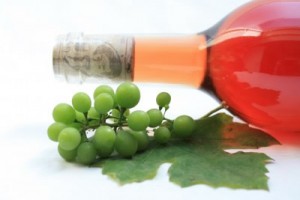 What is it about summertime that turns even the most ardent red wine drinkers into white wine sippers? Is it the hot summer days? The need for something cold and refreshing? Well, yes. But it’s also the acidity found in many white wines. The natural acids found in grapes (eg. tartaric, malic, citric) begin to decrease at the moment the grapes begin to ripen, or when the sugar content begins to increase. Winemaking is a balancing act between sweet (sugar) and sour (acid) in which the winemaker must harvest the grapes at the optimal time when sugar and acid are well balanced. A good amount of acidity adds brightness to a wine. Too much acid, and wine will taste tart or even sour. Too little acid, and the wine will appear what is often referred to as “flabby” or “flat.”
What is it about summertime that turns even the most ardent red wine drinkers into white wine sippers? Is it the hot summer days? The need for something cold and refreshing? Well, yes. But it’s also the acidity found in many white wines. The natural acids found in grapes (eg. tartaric, malic, citric) begin to decrease at the moment the grapes begin to ripen, or when the sugar content begins to increase. Winemaking is a balancing act between sweet (sugar) and sour (acid) in which the winemaker must harvest the grapes at the optimal time when sugar and acid are well balanced. A good amount of acidity adds brightness to a wine. Too much acid, and wine will taste tart or even sour. Too little acid, and the wine will appear what is often referred to as “flabby” or “flat.”
Acid in white wine can produce a thirst-quenching sensation. White wines with good acidity both pair well with a wide variety of foods and prepare the palate for the food. Acid helps wine stand up to foods high in salt, fat and rich proteins. Another benefit of acid is its role in wine longevity, helping some wines age longer and preventing browning and microbial spoilage. So, instead of grabbing a glass of California chardonnay with oak and high alcohol content that make it a food pairing problem, reach for a nice, crisp sauvignon blanc or riesling instead. Cheers!
The Summer Wine Acid Test
August 13, 2011 By